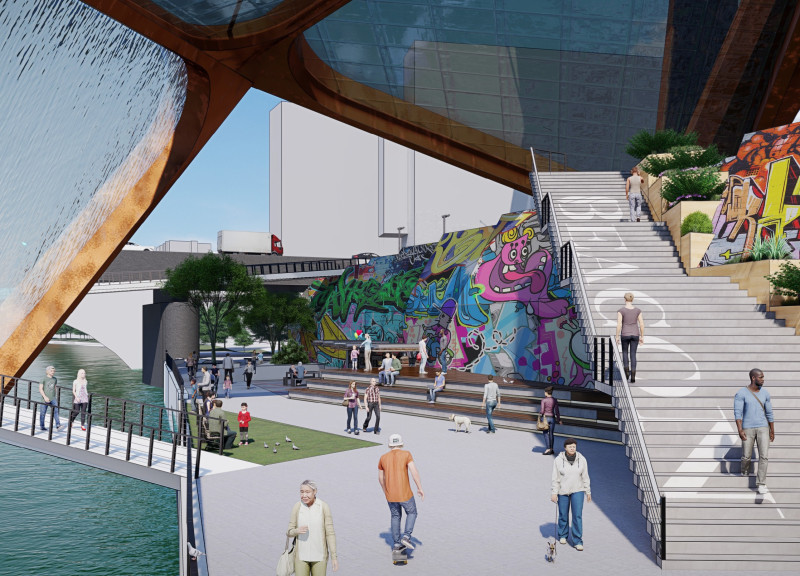5 key facts about this project
The architecture of the Beacon is characterized by its unique twisted form which not only offers an aesthetically pleasing silhouette against the Philadelphia skyline but also speaks to the building's function as a vertical city of sorts. This twisting shape allows for the stacking of various amenities, residential units, office spaces, and community areas, encouraging interaction among different user groups. The building aims to become a hub that fosters creativity and collaboration, making it an important addition to Philadelphia's architectural landscape.
One of the notable functions of the Beacon is its role as a community space. The design incorporates vast public areas, emphasizing connectivity and social interaction. The ground level features inviting open spaces, including plazas that serve as venues for community events and gatherings. These areas are designed to engage the public, providing opportunities for collaboration and support for local initiatives. The integration of vertical farming areas within the design reflects a commitment to sustainability and local agriculture, allowing community members to participate actively in food production, even in an urban setting.
The materials selected for the Beacon further contribute to its architectural narrative. The use of steel provides structural integrity, while expansive glass façades offer transparency and connection to the environment. Concrete serves as a durable base for the building, while wooden elements warm the interior spaces, ensuring that the atmosphere remains inviting and engaging. These material choices not only enhance the design's aesthetics but also contribute to the building's sustainability goals.
The building's site is strategically chosen to emphasize connectivity. Situated near the essential transit routes offered by 30th Street Station, the Beacon invites accessibility for both residents and visitors. The design transcends mere functionality by creating a sense of place that encourages people to come together. Outdoor steps and landscaped gardens further enhance the experience, ensuring that the building is seamlessly integrated into its urban context.
The architectural design approach focuses on adaptability and flexibility, allowing the space to evolve over time as community needs change. By fostering a dynamic environment where people can live, work, and interact, the Beacon stands not just as a building but as a vital component of the urban fabric.
Through its innovative design and carefully considered use of materials, the Beacon exemplifies how architecture can positively shape urban experiences. The project serves as a model for future developments, demonstrating that thoughtful design can create spaces that are both functional and enriching for the community. For further insights, including architectural plans, sections, and designs that illuminate the ideas behind the Beacon, interested readers are encouraged to explore the project presentation in greater detail.


























